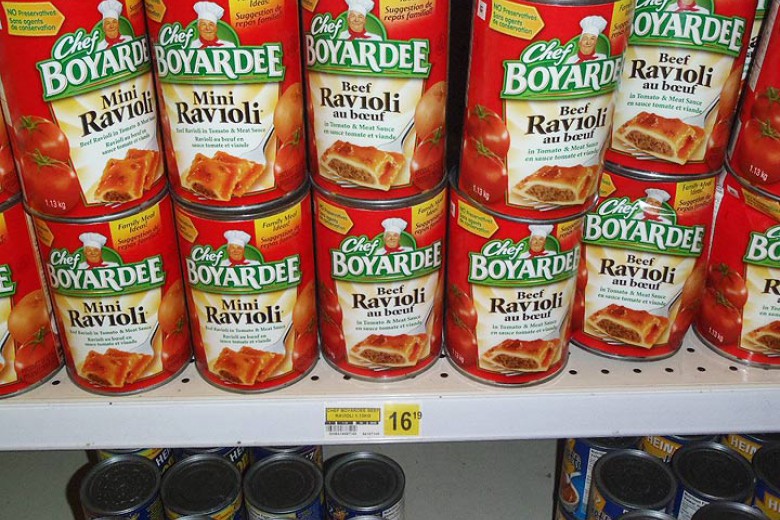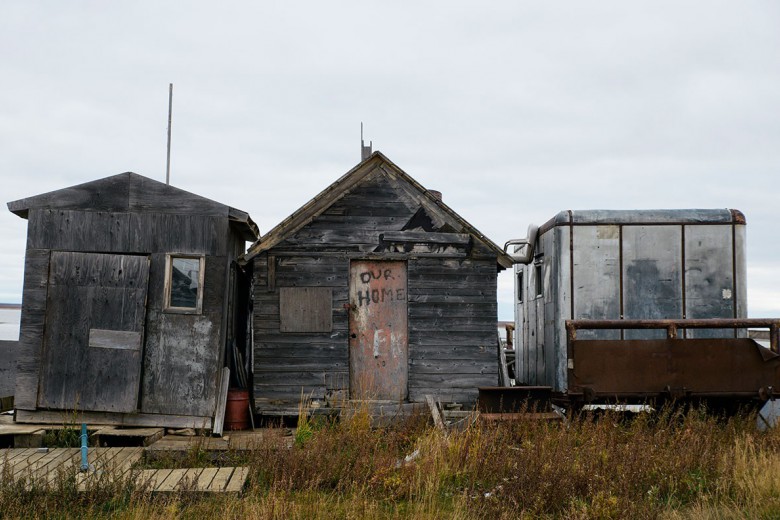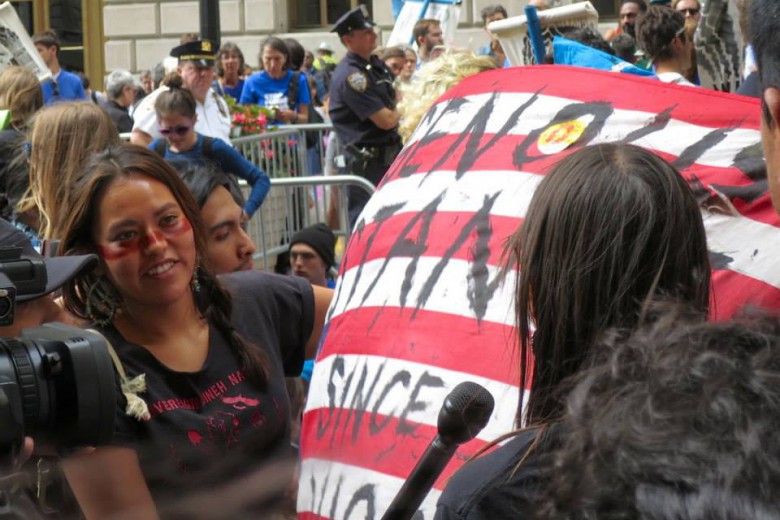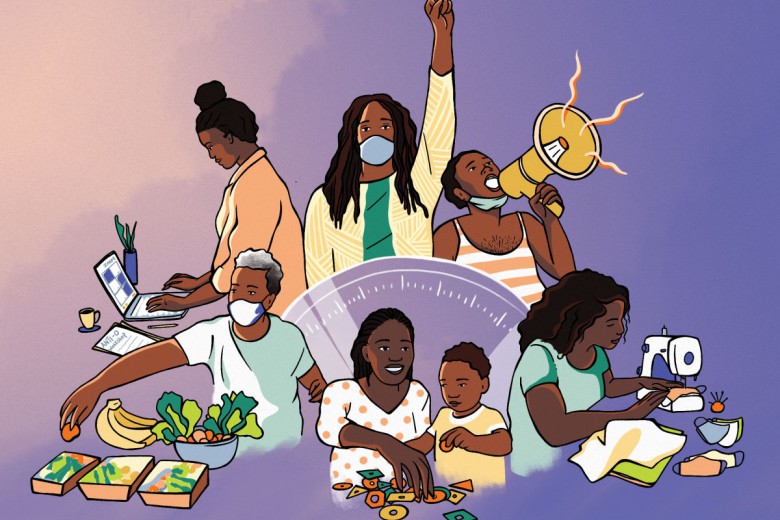Trappers in the Northwest Territories continue to prod-uce some of the most sought-after wild furs in the world, taking top dollar at international auctions. Big buyers in China and Russia spend millions on pelts.
But despite record sales of N.W.T. furs in 2013, which raked in $2.3 million for some 2,500 pelts, the number of fur harvesters out on the land in the N.W.T. pales when compared to what it once was at the height of the fur trade.
A stable group of roughly 650 active trappers continues to harvest furs commercially, most part-time or casually. Demand is up in Canada for their products, but the supply of pelts is at its lowest in the N.W.T. What used to be thousands of animals harvested up until the 1980s is now, in some cases, in the dozens.
Though the fur trade was irreversibly rocked by a massive crash in prices during the Great Depression and the rise of a mining economy in the N.W.T., the downturn in the traditional economy over the last half-century is more closely related to a term that has only recently begun to emerge from the lips of government officials.
“Somebody recently mentioned to me this term, ‘cultural genocide,’” says Francois Rossouw, fur marketing manager of the Genuine Mackenzie Valley Fur (GMVF) program for the Government of the Northwest Territories (GNWT).
“I look at what happened to the seal, [that situation] was a very unique way of people sitting in Europe, who had nothing to do with the seal – it never affected them – make all these decisions and they never see what the actual result is.”
By the 1980s, both the U.S. and Europe had banned sealskins, which had a devastating effect on harvesters in the N.W.T. and what is now Nunavut. Coupled with the larger anti-fur movement, Indigenous trappers catching all species were impacted by the rippling effects of the ban, which left the traditional economy as a whole on the brink. In communities like Resolute Bay, annual incomes dropped from $54,000 in 1982 to $1,000 in 1983.
“The Northwest Territories at the time was harvesting around 30,000 seals, [which] were providing a reasonable income for people, especially the people in the smaller communities in the Eastern Arctic. That all went flat,” Rossouw says. “We went … from 30,000 originally down to less than a thousand seals being sold. That’s a hell of an income. Then there was this huge increase in social spending to deal with the issues regarding the ills of society, that nasty stuff that rears its head when there’s nothing to do.”
That’s when the territorial government decided it needed to take action. In 1994, the first incarnation of the GMVF program was born, to force sealskins and other furs back into the market and ensure an income for trappers.
“One of the problems we identified was fluctuations in the market,” Rossouw says. “Like any commodity that’s traded internationally, there [are] huge fluctuations…. The idea was to try [to] stabilize the market; in other words, give the trapper a fair price for their product.”
For much of the 20th century and up until the late 1990s, trappers in the N.W.T. had incurred a great deal of debt to head out onto the land and trap furs, just to risk an unfriendly market price at the end of the season. The GMVF market initiative was designed to remove that risk.
The program is set up with two funds: a revolving fund of $1.5 million, used to advance money to trappers for every fur handed over for sale; and another used to pay for any losses, as well as auction house fees and shipping costs. The money made on the furs goes back into the revolving fund, and any profit above the amount of the advance goes to the trapper. If the fur sells for less than the advance, the government absorbs the shortfall.
Other funds have been established through the GNWT to assist harvesters. The territory’s Western Harvesters Assistance Program has provided almost $15 million since 1994 in the promotion of renewable resource harvesting, while over $1 million has been allocated in support of community hunts as well as the tools and equipment required to process and store food from hunts. Another $15,000 is set aside annually to compensate for assets destroyed by natural disasters.
But can you make a living?
Jane Dragon, a Chipewyan Elder living in Fort Smith, N.W.T., began trapping over 20 years ago with her husband as a way to be on the land and supplement their income. But doing it as a full-time job would have been impossible, she says, especially before the creation of the GMVF program.
“We were part-time trappers. He had a full-time job and so did I,” she says. “I think if we had had to live off it, it would never [have made] enough money to do it.”
When asked if the traditional economy in the N.W.T. could survive without the program, Rossouw hesitates before giving an emphatic “no.”
“I believe just the cost of shipping to market, especially out of regions like the Sahtu, they couldn’t do it,” he says.
Even in the record profit year of 2013, the average income per trapper was still only $3,759, in addition to the $951 of government support that each trapper received – not nearly enough to address the high costs of living in the North. Today, with a market lull, the average income per trapper is closer to $2,000.
When she was a young girl in the 1940s and ’50s, Dragon remembers droves of trappers mushing in and out of town, bells jingling on their sled dogs’ harnesses. In the following decades, many trappers and their children would trade in the lifestyle for new jobs with the burgeoning territorial government, or the mining industry, which both offered greater security.
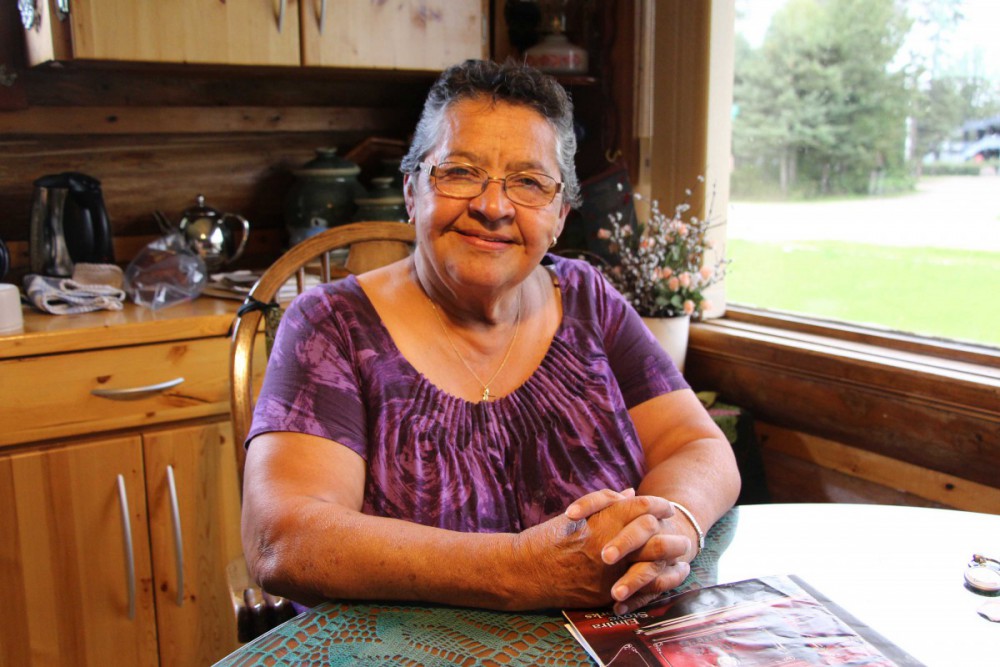
Residential schools also tore the next generation of trappers away from the land, something Rossouw says has had more of an impact than the anti-fur movement ever could.
“The loss of knowledge is massive,” he says. “I think that’s been one of the downfalls within the trapping community. You break that link within families living on the land and it’s not irreversible, but it’s pretty damn close.”
Labour of love
With gas prices at close to $2 a litre in communities throughout the territory in recent years and fur prices down globally, trapping is now an expensive and physically challenging labour of love.
“It was spending time together, mostly that’s what it was all about,” says Dragon, who is approaching 75. “It’s healthy and it’s good, really good…. Some places we would watch foxes play in the gully and see moose all the time.”
She says many of the animals trapped aren’t just killed for their skins; animals like beaver and muskrat continue to be popular traditional foods in the North. Those that aren’t consumed for food are returned back to the land to be scavenged by other animals.
Though Dragon, whose husband passed away several years ago, sold one of her two traplines and has mostly retired her traps, she hopes to reinvigorate the 67 kilometres of overgrown trail this fall with the help of her grandson.
It’s connections like those that make the fur program affordable and worthwhile, Rossouw says.
“At the end of the day, this is a social program that’s keeping people active and keeping families healthy,” he says. “Trapping is one of those activities people can actually do and be in connection with their past and also provide an income for today, but also look to the future with the next generation – as a means to both connect culturally, language-wise with the land, but also demonstrate a use.”
Bones, horns, and antlers
For people like Peyton Straker and her partner Kyle Enzoe, artists and subsistence harvesters based out of Yellowknife, the traditional economy provides an alternative to the resource extraction industry and government desk jobs.
“If you grow up in the N.W.T. and are an Indigenous person, your chances of being able to get a job are pretty high,” Straker says. “You can go into resource extraction with a Grade 7 education – they advertise that. They want you to not have an education because it’s way easier to manipulate people when you don’t have a conventional education. These are Indigenous people who are contributing to the downfall of our earth and that’s not really talked about. So for me and Kyle, our options for employment are resource extraction or working for the GNWT, and neither of those things are super comfortable for either of us.”
Neither Straker nor Enzoe finished high school, opting out of the conventional school system for a land-based approach to learning. Enzoe, a member of the Lutsel K’e Dene First Nation, grew up on the land surrounding the East Arm of Great Slave Lake, and met Straker while the two were studying at Dechinta Centre for Research and Learning (the bush university).
The two regularly hunt and trap as a food source for themselves and their communities, but more recently decided to turn an additional profit from their harvests by making jewellery from the bones, horns, and antlers.
“A huge part of traditional harvesting and the protocol that goes along with it is just the idea that everything has a purpose and use, and that’s just also part of respecting animals, so that’s what we do,” Straker says. “It had never been something I thought I could make a living off of, but for about a year, it paid as much as any other full-time job would.”
Straker is just one of the many artisans using the traditional economy to supplement their income in the N.W.T. Though some, like Straker, source their own materials, many are accessing the furs and hides they need from the GMVF program through a secondary program established by Rossouw.
“I looked at two reports on the arts and craft industry, and in both reports, the number one issue was access to raw materials,” he says. “That wasn’t being addressed, and in the marketplace, certain species weren’t doing as well. Beaver, for example, we were advancing $25 and averaging $11, so we were losing $14 every beaver. So I thought, why not take as many of those beavers out of the market, get them dressed and then bring them back in and resell them at cost to the crafters? Lo and behold, it works.”
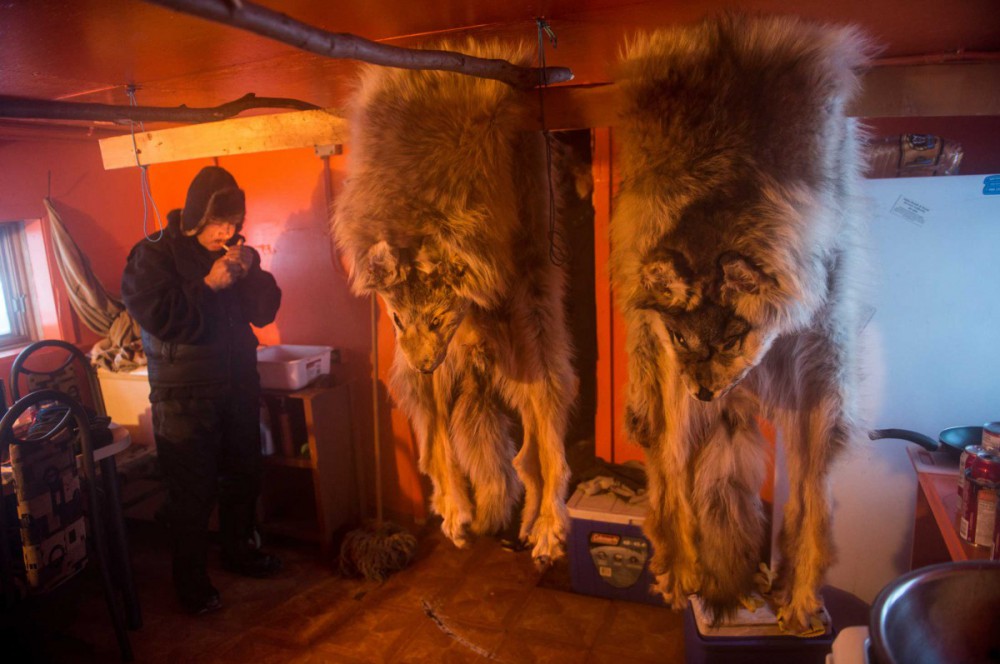
For every dollar the government is investing into its traditional craftspeople, the return is between four and seven times. Last year, artisans made an estimated $625,000 from products made with furs and hides supplied through the GMVF.
The artisanal demand for furs is now greater than the supply, Rossouw says. While beaver is the most commonly trapped animal in the territory, he is still importing beaver pelts for crafters. With fewer than 100 seals harvested a year in the N.W.T., 500 more need to be imported to keep up with demand.
While the growing interest in fur products hasn’t yet seen a spike in the number of trappers out on the land, Rossouw says it is still having a profound cultural impact in communities.
“What has really happened is it has spawned or definitely increased the interest in sewing groups in small communities,” he says. “So you have youth and Elders now working together, and some of the ladies have told me this has made a huge difference in their communities, especially with the young ladies. They’re coming in and starting to talk with the Elders; the Elders are telling their stories and somebody’s listening now.”
Memories of caribou
When Enzoe was 15, in his home community of Lutsel K’e, he used to get called to the airport to shoot the caribou that had wandered on to the landing strip. The animals were then to be shared throughout the community.
Sixteen years later, such occurrences are already distant memories.
“Now you have to travel eight hours north to get a caribou,” Straker says. “It’s visible, when you’re driving into Lutsel K’e, there’s not a single caribou; there [are] none. And the muskox are getting further and further south. The Denesuline are not muskox people; muskox is new to their diet, but now it’s around them. It’s almost like they’ve replaced the caribou. So those changes are happening; they’re real.”
Climate change is impacting Canada’s North faster than any other region, and caribou – coincidentally a key indicator species and staple food for Indigenous people – are among the species to be hit the hardest.
With record forest fires tearing through their wintering grounds and consuming their main food source, lichen, barren ground caribou herds in the N.W.T. are moving further into the tundra each year. The same is true of many fur-bearing species, which are fleeing the burns and becoming increasingly inaccessible to harvesters.
“It’s more expensive, for sure, because you have to travel way further to actually harvest animals,” Straker says. “A lot of people don’t have access. They don’t have a snowmobile. A lot of people don’t have money for gasoline, so they go without it. Those are their country foods, their traditional foods, and that’s what the Elders tell us to eat. It affects you negatively when you can’t do those things.”
Getting back to the land
With attitudes around fur improving and some recent victories for Indigenous harvesters, like the new Nunavut exemption from the European Union’s seal ban, Rossouw says the situation is improving for harvesters in the North.
That said, reviving the traditional economy will take education, and teaching the younger generations the skills required for subsistence harvesting is something that needs to be taken on by families, not just by schools or short government programs.
“It’s all right to train the children, but you have to start them when they’re young, too, and have respect for animals,” says Dragon, a long-time educator who teaches the Chipewyan language and traditional cultural knowledge in N.W.T. schools using her extensive collection of furs and accounting for every animal in the N.W.T.
“In the school, it’s just a fast thing; you know, you don’t learn how to trap in two weeks. That’s what the kids get now,” she says. “I would change the school schedule if I had my way. I would start the first of October and end on the first of June, so they can have spring hunt and fall hunt with their families, instead of so many breaks during the winter months.”
Outside of the North, Rossouw says the government continues to promote fur products in the hopes that greater demand and high prices will also prove an incentive for trappers in the N.W.T.
“It’s very easy for someone in an urban environment to stand up and say ‘I’m anti-fur.’ It doesn’t affect them; it doesn’t do anything to them. Anybody can do it,” he says.
“To me, the biggest thing is realizing fur is a commodity, it has a face, and there are people behind the production of this fur. There’s a livelihood. There’s a culture.”



